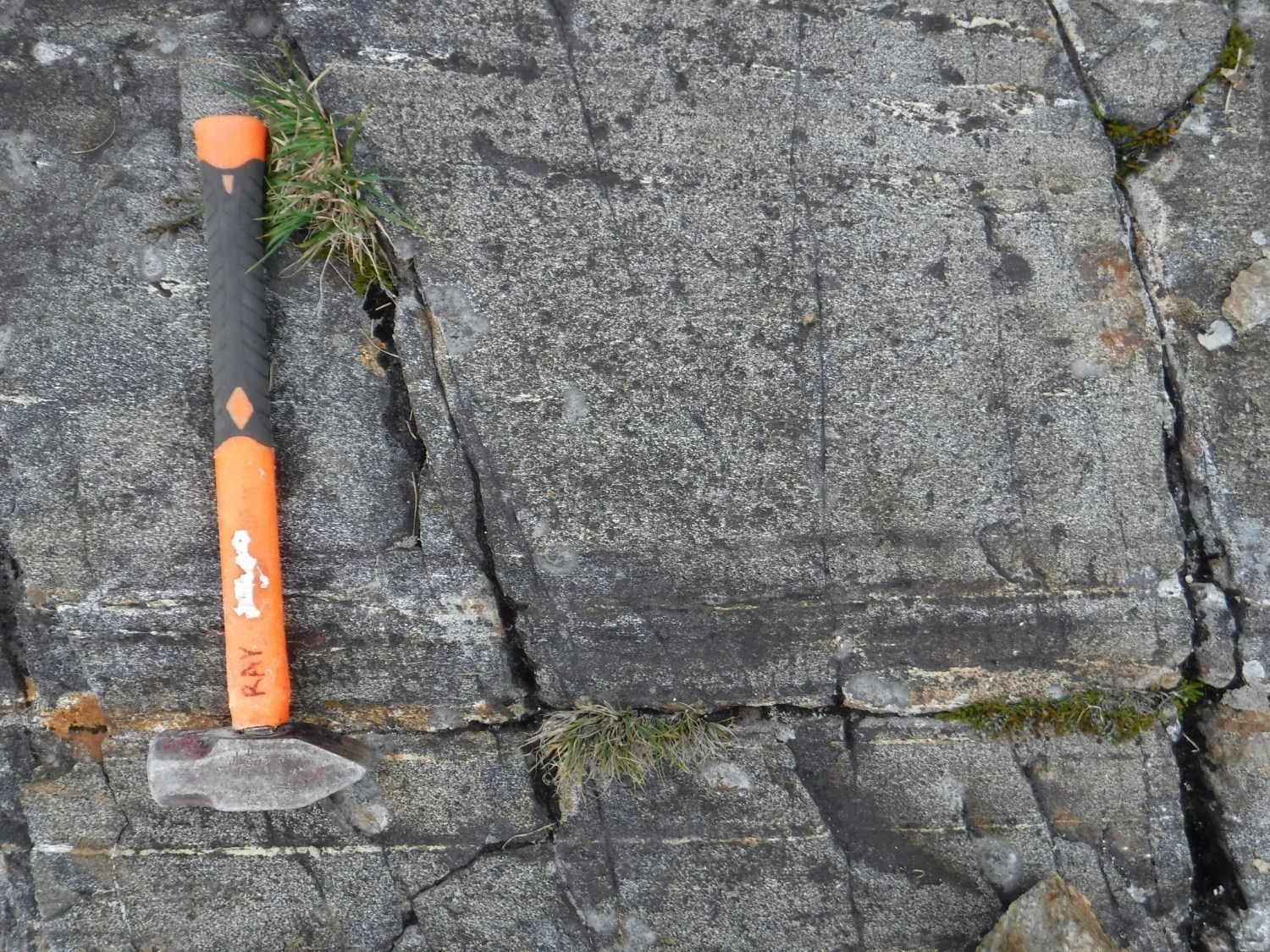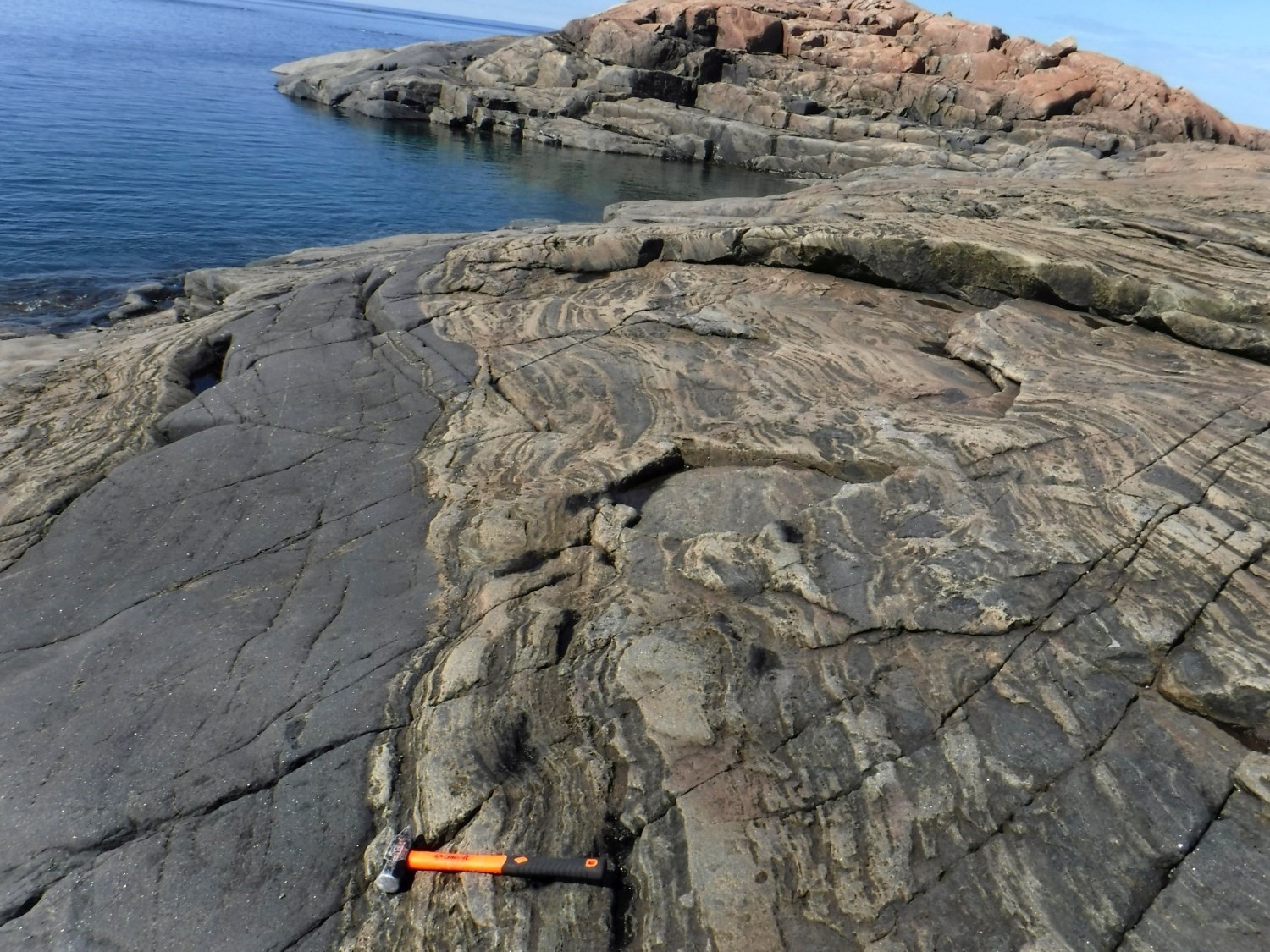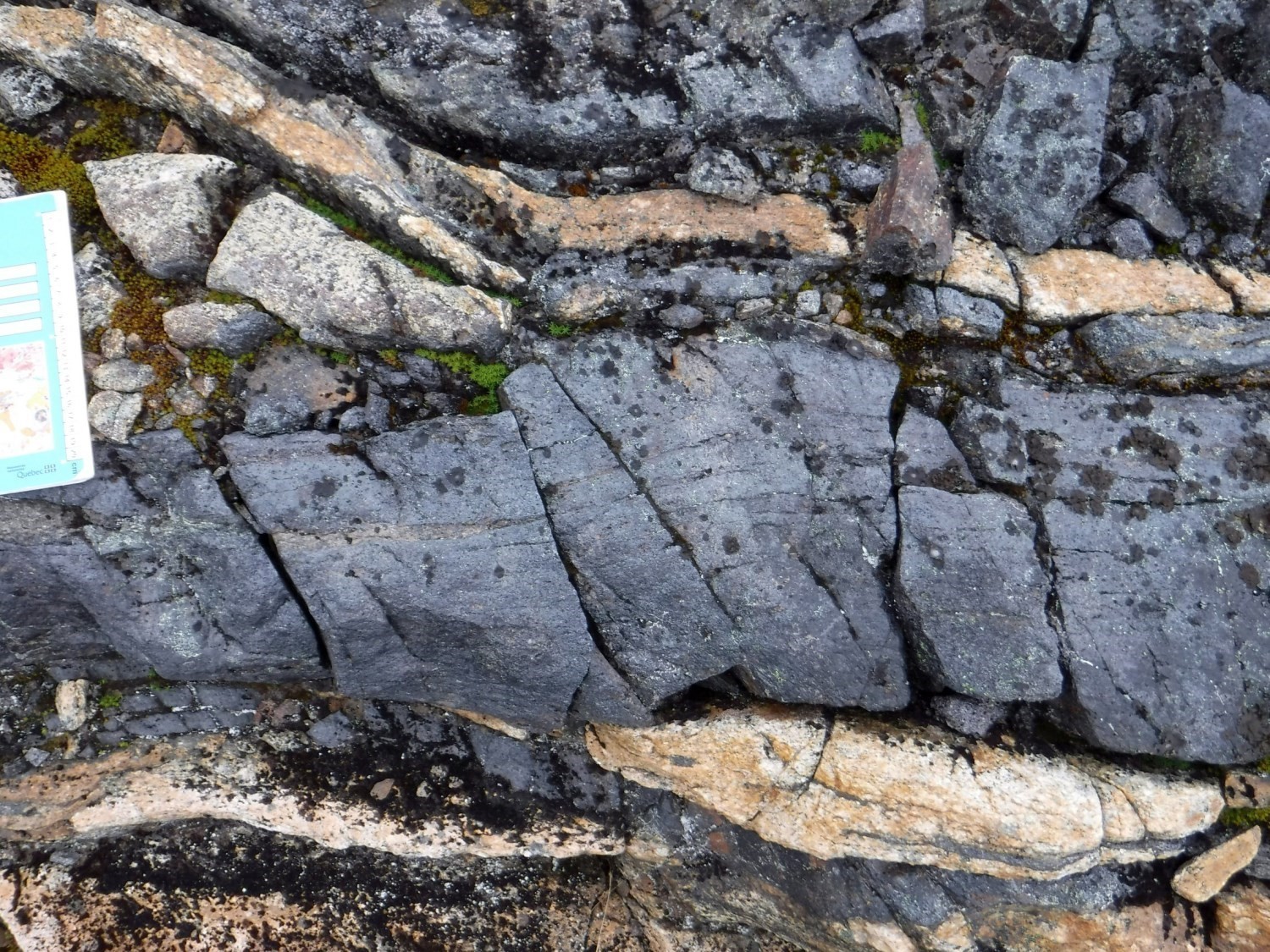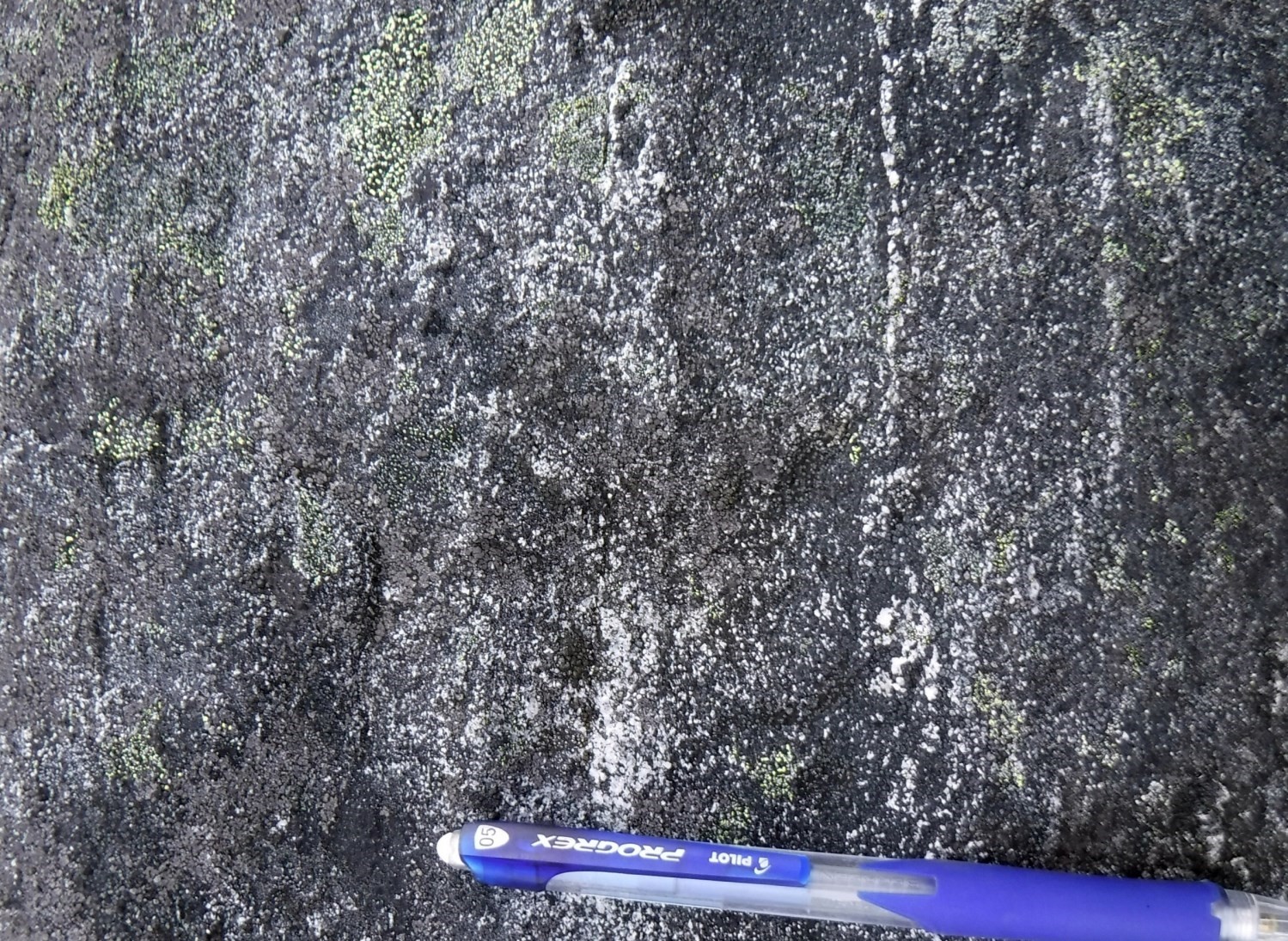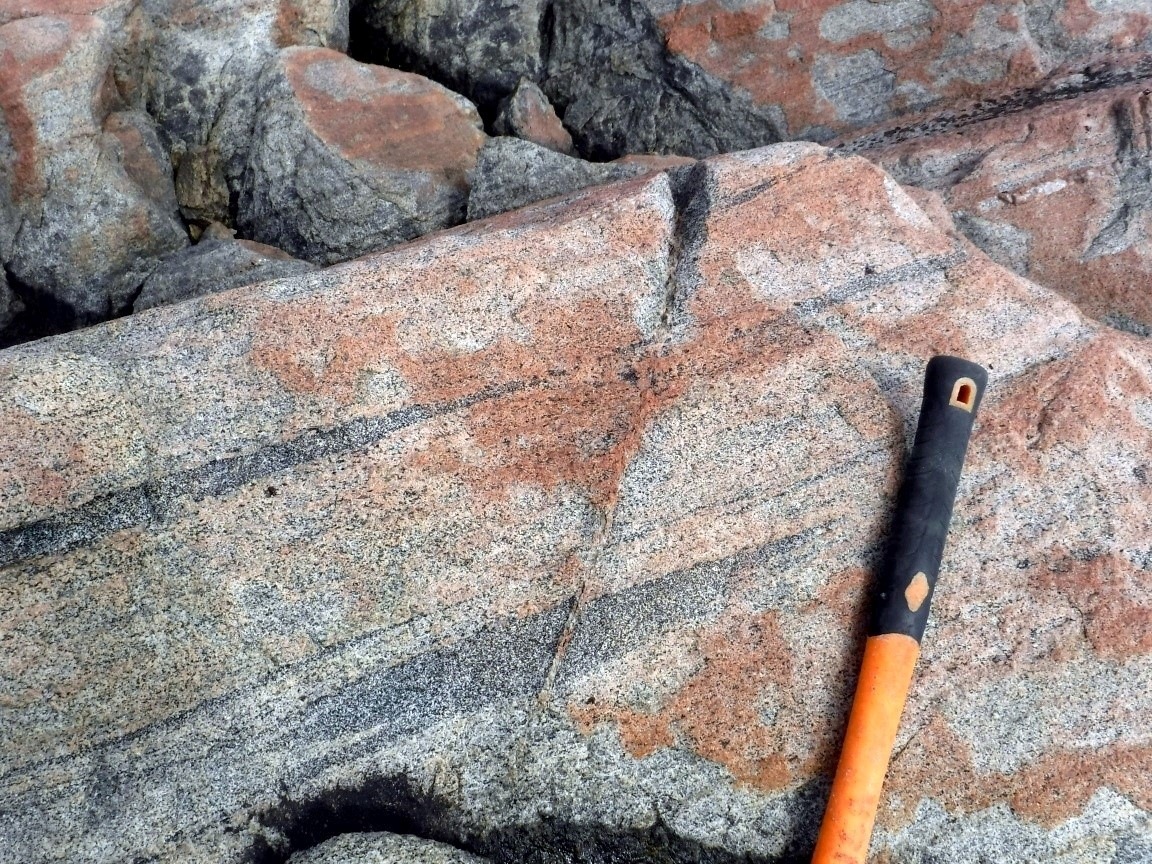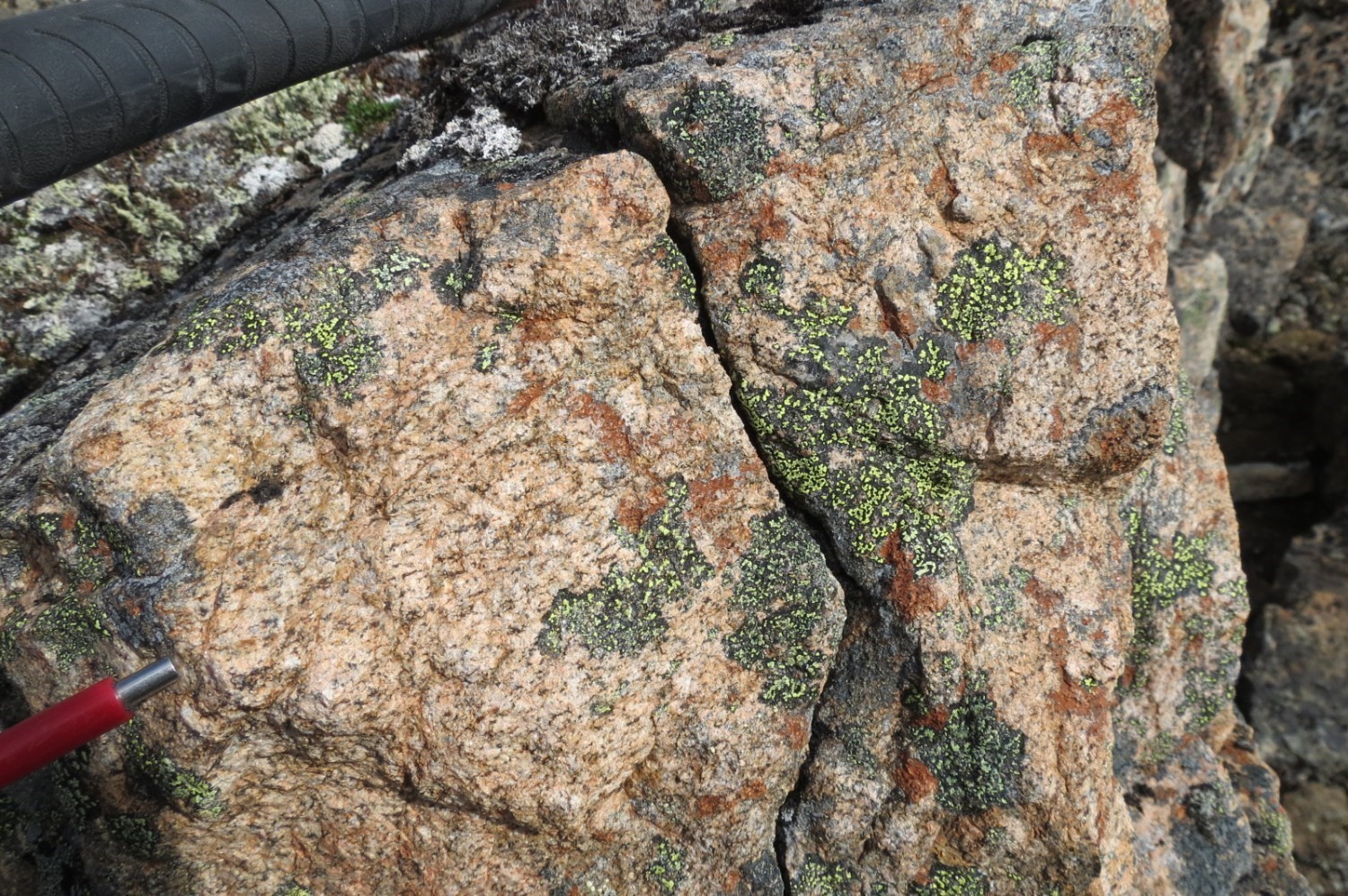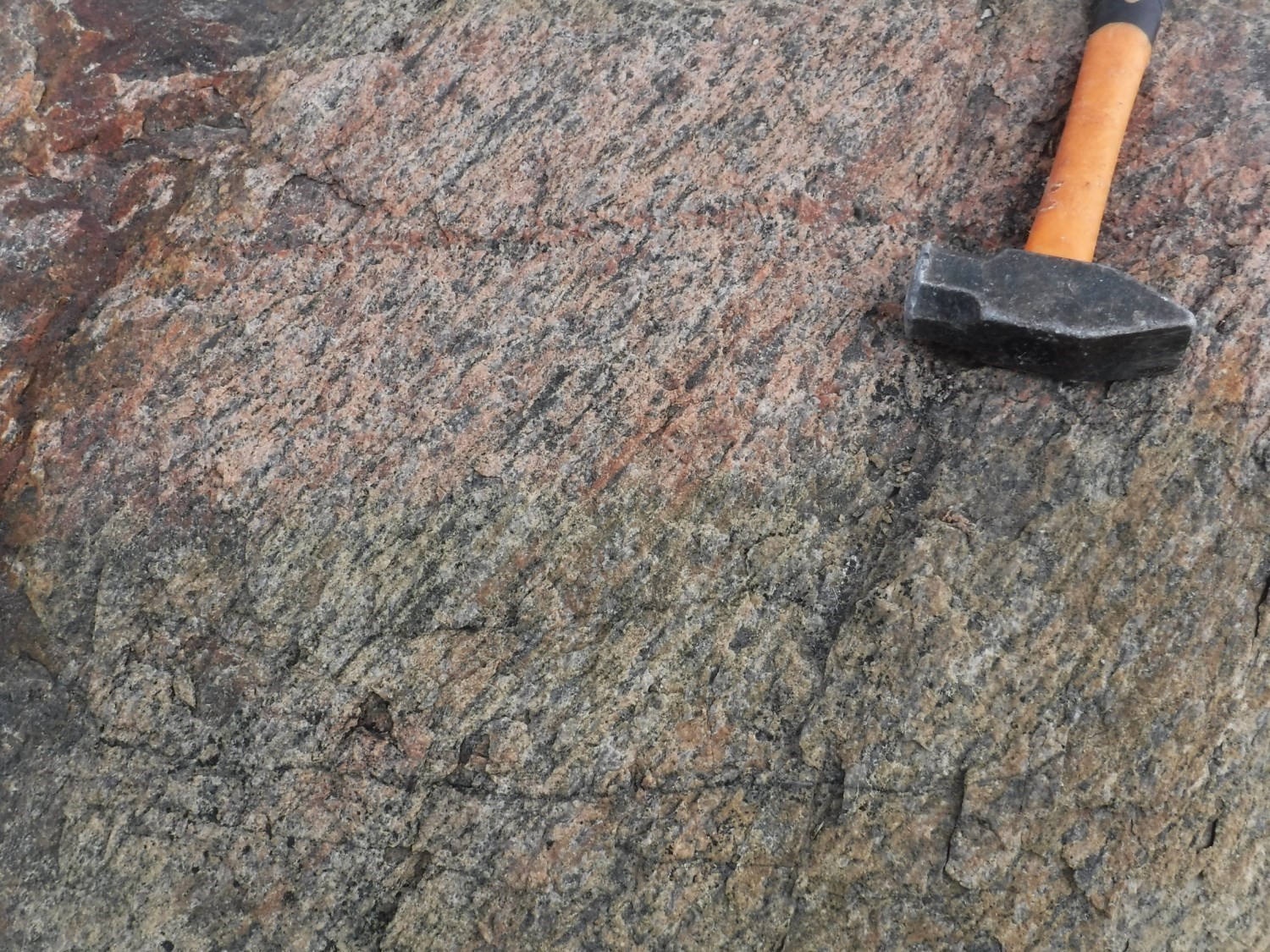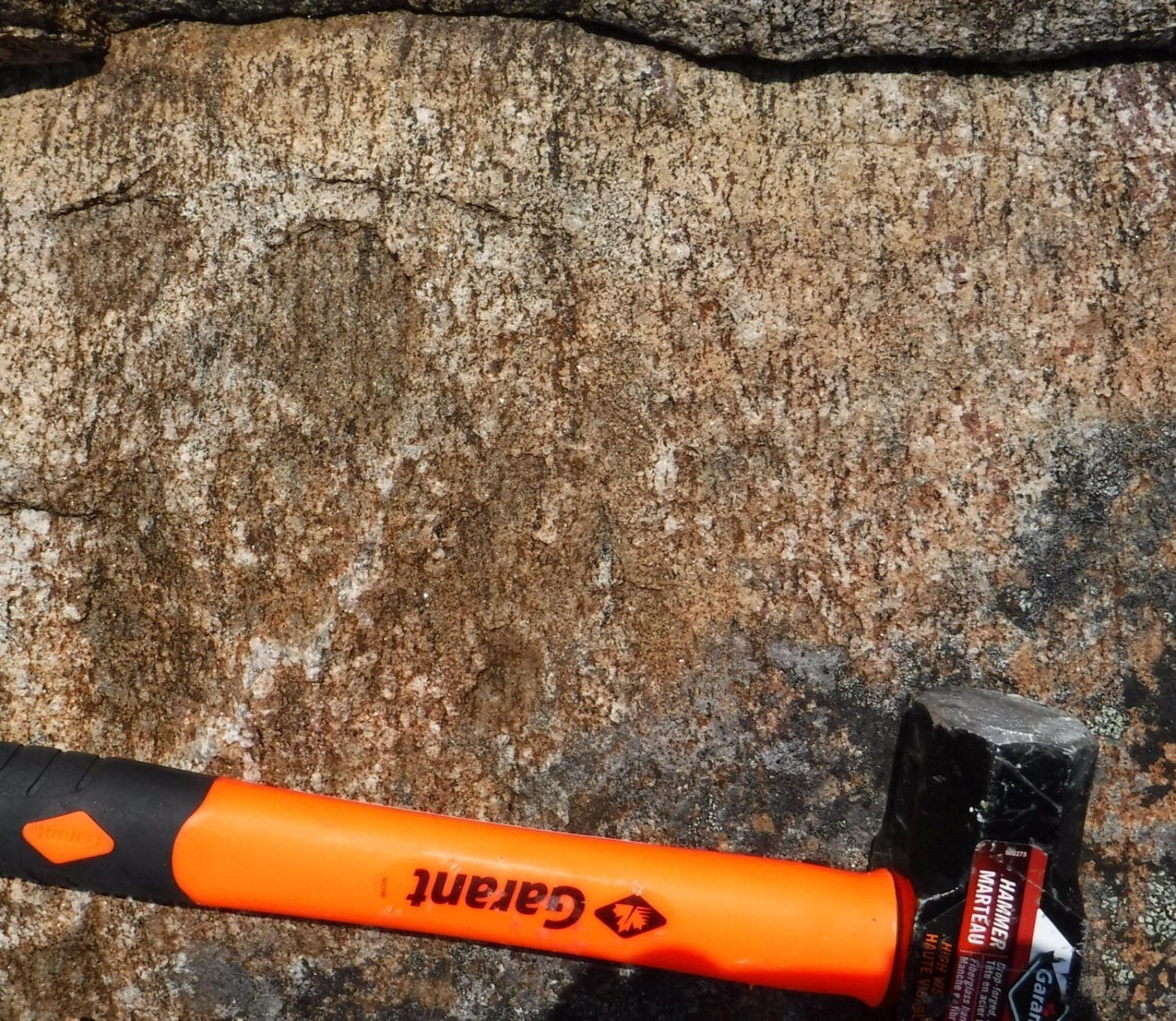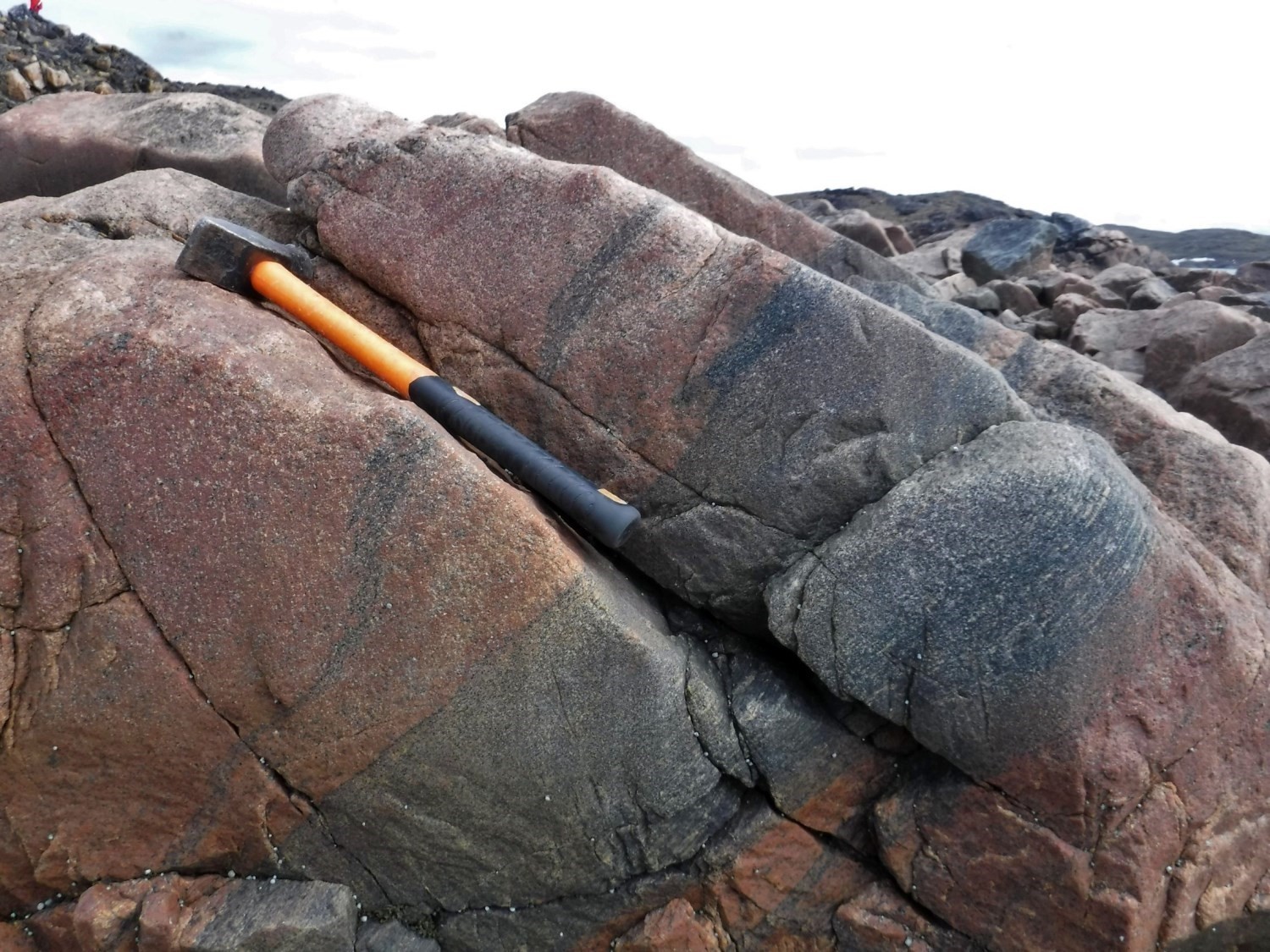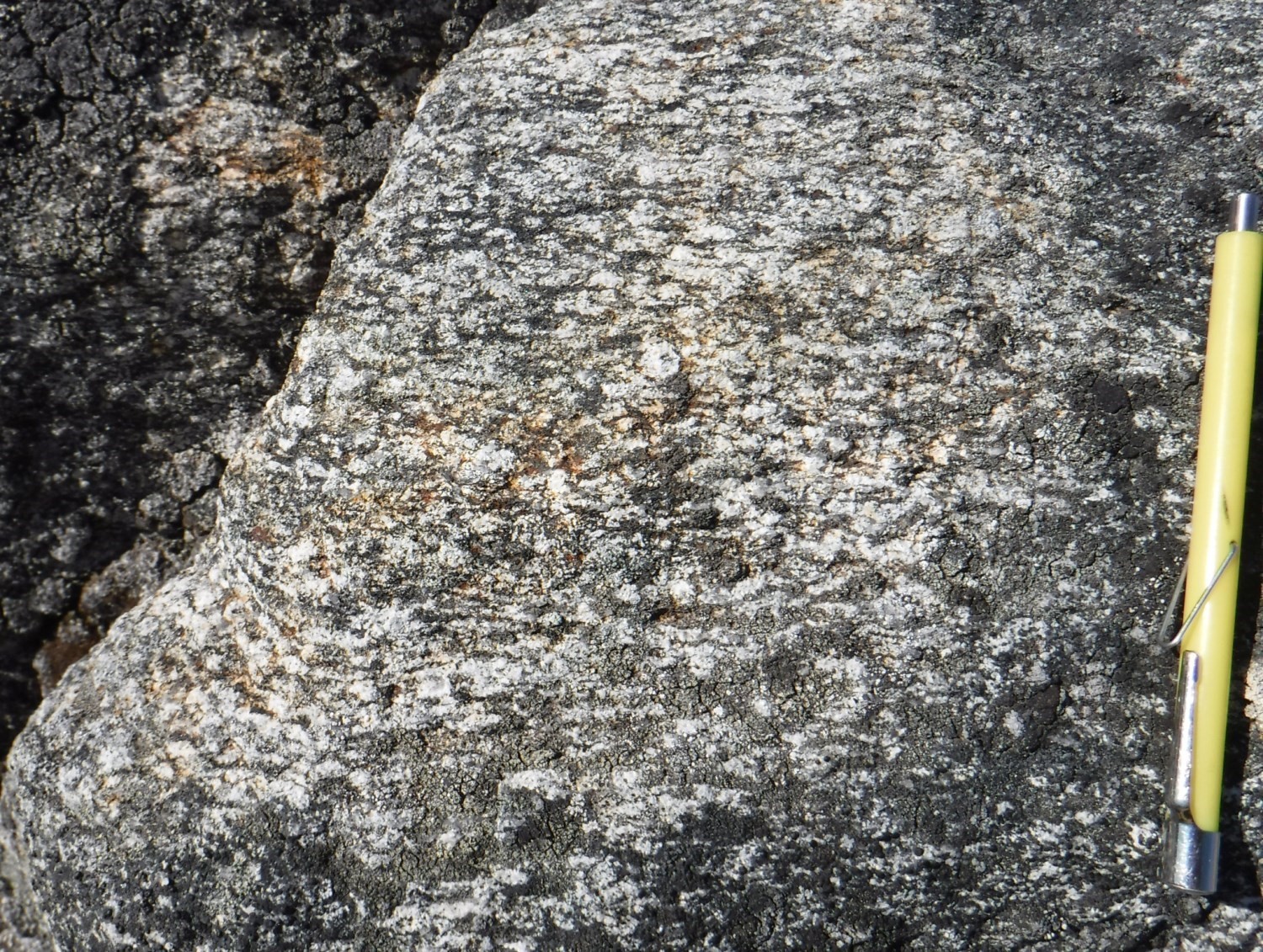
| Author: | Wardle et al., 1993 |
| Age: | Paleoproterozoic |
| Reference section: | |
| Type area: | Grenfell Sound area (NTS sheet 25A) |
| Geological province: | Nain Province |
| Geological subdivision: | Burwell Lithotectonic Domain |
| Lithology: | Intrusive rocks |
| Type: | Lithodemic |
| Rank: | Suite |
| Status: | Formal |
| Use: | Acive |
None
Background
Wardle et al. (1993) referred to the “Killinek Charnockitic Suite” as a homogeneous polyphase intrusion consisting of charnockite, enderbite, hypersthene diorite, opdalite and mangerite originally mapped by Taylor (1979). In the early 1990s, the Geological Survey of Canada (GSC) conducted several summer mapping campaigns covering the entire Torngat Mountains in Québec and Labrador (Van Kranendonk, 1993, 1994a, 1994b; Van Kranendonk et al., 1994a, 1994b, 1995; Van Kranendonk and Wardle, 1994, 1995). This Paleoproterozoic intrusion is interpreted as an inclined batholith emplaced in a subduction context (Van Kranendonk and Wardle, 1996). Scott (1995) and Scott and Machado (1995) made several U-Pb zircon datings that allowed to constrain the age of intrusion between 1910 and 1864 Ma. Mathieu et al. (2018) introduced the term “Killinek Suite” for this unit in order to incorporate units of similar age and composition, but lacking hypersthene. These latter units, already described by the previous authors, have been recognized east of orthopyroxene intrusions. The unit’s name comes from Killinek Island (now Killiniq), in the far north of Labrador, on the border of Nunavut and Newfoundland and Labrador (NTS sheet 25A07).
Description
Wardle et al. (1993) describe rocks of the north end of the Torngat Mountains as a package of granitoids with or without hypersthene, with buff-coloured patina, consisting of diorite, tonalite, granodiorite, granite, enderbite, opdalite and charnockite. The authors underline the great petrographic homogeneity of this unit, which is independent of the rock composition. Rocks of the Killinek Suite all have partially recrystallized intrusive texture, medium grain size and streamed ferromagnesian mineral clusters. Lithologies of the Killinek Suite are moderately to highly magnetic. In addition, these rocks are in contact with metatexites of the Tasiuyak Complex (pPtas) and gneiss of the Noodleook Complex (ApPnoo), both characterized by a weak magnetic signature. They are therefore easily distinguished on aeromagnetic maps (GSC, 1985).
The Killinek Suite was subdivided into five informal units: 1) a gabbronorite unit (pPkil1); 2) a dominant lithofacies consisting of orthopyroxene quartz diorite and enderbite (pPkil2); 3) a unit grouping potassic intrusions consisting of opdalite and charnockite (pPkil3); (4) a speckled orthopyroxene quartz monzodiorite unit (pPkil4); and 5) a minor unit consisting of coarse-grained orthopyroxene quartz syenite (pPkil5).
Killinek Suite 1 (pPkil1): Gabbronorite
Unit pPkil1 unit was introduced by Mathieu et al. (2018) to group metamorphosed mafic intrusions associated with the Killinek Suite. This unit forms small massifs, a few hundred metres long and a few tens of metres wide on average. It also occurs as centimetric bands and metric banks in other Killinek units, or as partially assimilated enclaves. This unit consists of homogeneous gabbronorite, fine to medium-grained, foliated and granoblastic. The proportion of ferromagnesian minerals ranges from 40 to 70%. Primary minerals are brown hornblende (30-50%), corroded orthopyroxene (3-25%), clinopyroxene (10-30%), quartz (≤3%) and magnetite (≤5%). Accessory phases are red biotite, scapolite, apatite, garnet, zoisite and carbonates. Plagioclase forms large zones of even-grained crystals, with slight undulatory extinction and generally not twinned. Orthopyroxene is partially replaced by iddingsite and carbonates. Brown hornblende is commonly surrounded by a symplectic rim of plagioclase and fine-grained clinopyroxene. Amphibole contains a pyroxene core in places. Biotite develops on the edge of hornblende.
The Killinek Suite 1 also includes two minor informal subunits: 1) a subunit of massive oxides (pPkil1a), and 2) a subunit of gabbronorite retrograded to the amphibolite facies (pPkil1b).
Killinek Suite 1a (pPkil1a): Massive Oxides
This subunit groups boudinaged horizons of massive oxides that are rarely regionally mapped. These horizons are usually located on the edge of the hypersthene quartz diorite unit (pPkil2). Granoblastic oxides include magnetite, titanomagnetite and ilmenite.
Killinek Suite 1b (pPkil1b): Gabbronorite Retrograded to the Amphibolite Facies
Rocks in this subunit are composed of 60 to 65% ferromagnesian minerals dominated by green hornblende. They also contain minor amounts of clinopyroxene, brown biotite, opaque minerals, apatite, zoisite and carbonates. These gabbronorites are foliated and granoblastic and share the same petrographic characteristics as unit pPkil1. Subunit pPkil1a outcrops in the eastern part of the Killinek Suite.
Killinek Suite 2 (pPkil2): Orthopyroxene Quartz Diorite and Enderbite
It is the main unit of the Killinek Suite. It consists of homogeneous rocks whose composition varies at the regional scale from hypersthene quartz diorite to enderbite, with minor amounts of hypersthene diorite. It features a light beige patina combined with a light to dark olive colour in fresh exposure, characteristic of enderbite. However, the buff-coloured patina and brown sugar-coloured fresh surface usually associated with charnockites are also widespread. The modal composition of these rocks is 2-28% quartz, 60-75% plagioclase, 0-10% K-feldspar and 5-25% ferromagnesian minerals.
In thin section, plagioclase forms large zones of very fine to fine and even-grained crystals, but also occurs as medium grains with recrystallized rims. Locally, stresses were large enough to deform polysynthetic twins. Plagioclase is sericitized in places, but is also replaced by scapolite. Quartz forms flattened rods or lenses composed of polycrystalline aggregates of anhedral crystals with undulatory extinction. Interstitial K-feldspar is fine grained. Like quartz, ferromagnesian minerals define foliation and lineation. They are represented by orthopyroxene, replaced and altered to varying degrees by an assemblage of iddingsite, opaque minerals and carbonates, and reddish-brown biotite. These two phases form clusters ranging in size from 0.5 to 5 mm often associated with discontinuous hornblende and clinopyroxene rims. Accessory phases (magnetite, apatite, zircon and epidote) are scarce and are concentrated in mafic clusters.
Killinek Suite 2a (pPkil2a): Quartz Diorite and Tonalite
This subunit has the same petrographic characteristics as the main pPkil2 unit. The major difference is the absence of orthopyroxene, which is explained by retrograde metamorphism to the amphibolite facies. Wardle et al. (1993) mapped biotite-hornblende tonalites and quartz diorites in eastern Torngat Mountains. They found that the transition from the main unit to this subunit was a gradual disappearance of orthopyroxene to the east. The boundary (or isograd) between units with and without orthopyroxene is generally north-south. Diorite and tonalite of subunit pPkil2a are also observed in places on the shore of the Ungava Bay as decimetric to decametric diffuse grey-patina masses within outcrops of the main pPkil2 orthopyroxene unit. Ferromagnesian phases represent 7 to 18% of the mode and are represented by brown biotite, garnet and hornblende. Musovite is also present. Accessory minerals are zircon, apatite and opaque minerals.
Killinek Suite 3 (pPkil3): Opdalite and Charnockite
This unit groups potassic rocks of the Killinek Suite. It consists of charnockite, opdalite and some mangerite and jotunite. It features a light beige patina in altered surface and a brown sugar colour in fresh exposure. For the main pPkil3 facies, the modal proportion of quartz varies between 18 and 30%, K-feldspar (microcline) between 13 and 50% and plagioclase between 25 and 50%. Ferromagnesian minerals represent 5 to 10% of the mode, but reach 15% in places. Some samples have a syenogranite composition. Rocks of this unit have a variable magnetic susceptibility and are characterized by their high homogeneity. Bands and centimetric to decimetric coarser-grained clusters of the same composition and in diffuse contact are observed on most outcrops. Grain size is generally medium with recrystallization of grain edges associated with metamorphism and deformation.
In thin section, quartz forms more or less well-defined rods or flattened lenses composed of anhedral crystals with undulatory extinction. Microcline and plagioclase occur as medium grains associated with a fine, recrystallized rim or as zones of granoblastic crystals with triple points and straight edges; both habits are commonly seen in the same sample. Myrmekites are observed locally. Ferromagnesian minerals are scarce and form disseminations or elongated millimetric aggregates in streaks. They are dominated by brown-red biotite and orthopyroxene. The latter is replaced to varying degrees by iddingsite and oxides. Accessory phases are apatite and zircon.
Unit pPkil3 has four minor subdivisions: 1) a subunit of the same composition as the main unit, but without orthopyroxene (pPkil3a); 2) a porphyraceous granodiorite subunit (pPkil3b); a garnet jotunite subunit (pPkil3c); and 4) a late pink granite subunit (pPkil3d).
Killinek Suite 3a (pPkil3a): Granodiorite and Granite
This subunit was introduced to describe the potassic lithologies retrograded to the amphibolite facies that outcrops in eastern Killinek Suite. Rocks have the same petrographic characteristics as the main unit (pPkil3). However, it is slightly richer in ferromagnesian minerals (10-15%). The rock is light grey and slightly pinkish in both altered surface and fresh exposure. The main ferromagnesian mineral is brown-green biotite slightly chloritized in places. Skeletal muscovite is commonly observed as symplectites with K-feldspar or, more locally, clinopyroxene. Accessory phases are green hornblende, clinopyroxene, zircon, apatite and opaque minerals. Plagioclase is slightly sericitized. On the shore of Ungava Bay, a gradual shift from orthopyroxene granite to orthopyroxene-free granite was observed at several locations. This passage is distinguished by a variation in the colour of the patina and fresh surface from brown sugar to pink.
Killinek Suite 3b (pPkil3b): Porphyraceous Granodiorite
Wardle et al. (1993) report the presence of megacristic granite sills intruding into rocks of the Killinek Suite. This subunit outcrops mostly in conformable decametric horizons, usually close to contact between rocks of the Killinek Suite and metatexite klippes of the Tasiuyak Complex and gneiss of the Noodleook Complex. It is locally mappable to the work scale. It consists of granodiorite with centimetric pink K-feldspar phenocrystals. Ferromagnesian minerals are hornblende and biotite. Accessory phases are zircon, apatite and magnetite.
Killinek Suite 3c (pPkil3c): Garnet Jotunite
Garnet jotunite of subunit pPkil3c is highly magnetic and is light brown in altered patina and brown sugar in fresh exposure. It contains 15% mafic minerals represented by garnet (12%), orthopyroxene and biotite. Accessory phases are iddingsite (replacing orthopyroxene), epidote, clinopyroxene, hornblende, opaque minerals and zircon. Garnet inclusions are made of iddingsite-rimmed oxides. Garnet-quartz and quartz-hornblende-biotite symlectites are observed in thin section.
Killinek Suite 3d (pPkil3d): Pink Syenogranite
Subunit pPkil3d outcrops as decametric to hectometric oblong masses. It also occurs as parallel decametric intrusions in gneiss of the Noodleook Complex and other subdivisions of the Killinek Suite. This subunit consists of slightly magnetic syenogranite and dark pink K-feldspar granite. Leucocratic rocks are fine grained and partially recrystallized. Microcline is perthitic when the core of the original crystal is preserved, otherwise it forms zones of fine and even-grained crystals. Quartz is anhedral with undulatory extinction. Ferromagnesian minerals (<4%) align with foliation. They are represented by magnetite and brown biotite. Accessory phases are zircon, apatite and epidote.
Killinek Suite 4 (pPkil4): Speckled Orthopyroxene Quartz Monzodiorite
Unit pPkil4 unit outcrops mainly along the eastern and southern margins of the Killinek Suite. It is usually interbedded with metatexites of the Tasiuyak Complex. It has a brownish-grey alteration skate and is brown sugar-coloured in fresh exposure. It consists of homogeneous coarse-grained orthopyroxene quartz monzodiorite (jotunite), composed of 12-15% quartz, 13-20% K-feldspar, 50-62% plagioclase and 15-22% ferromagnesian minerals. It is characterized by the arrangement of mafic minerals in clusters 0.5 to 2 cm in diameter.
Under the microscope, plagioclase forms centimetric zones consisting of medium grains with indented edges and fine granoblastic grains. There are antiperthites in places. Quartz occurs as lenses or recrystallized rods in anhedral subgrains with undulatory extinction. Fine-grained quartz is also found in granoblastic zones dominated by plagioclase. K-feldspar (orthose) is perthitic. It develops myrmekites on grain edges and contains rounded quartz inclusions.
Ferromagnesian mineral clusters consist of orthopyroxene (≤12%), green hornblende (≤12%), brown-red biotite (2-5%), and some clinopyroxene associated with magnetite (2%) and orthopyroxene alteration products (carbonates and iddingsite). Accessory phases are represented by zircon and apatite. Hornblende is anhedral and is usually found on the edge of ferromagnesian mineral clusters and replacing orthopyroxene. Orthopyroxene is corroded and replaced to varying degrees by iddingsite, carbonates and opaque minerals. It tends to be in the core of clusters, while biotite develops on the margins of clusters. Accessory phases are also concentrated in mafic mineral clusters.
Deformation is characterized by the stretching and flattening of quartz, which forms lenses or rods, and the lengthening of ferromagnesian mineral clusters. Felsic phases have undulatory extinction. Plagioclase twins are slightly bent. Grain edge migration figures are systematically observed.
Unit pPkil4 incorporates two informal minor subdivisions: 1) a specked quartz monzodiorite subunit (pPkil4a), and 2) an orthopyroxene porphyraceous quartz monzodiorite subunit (pPkil4b).
Killinek Suite 4a (pPkil4a): Speckled Quartz Monzodiorite
Rocks of this subunit have exactly the same petrographic characteristics as the pPkil4 unit, the only difference being the absence of orthopyroxene. Both the patina and fresh surface are light grey. Plagioclase forms coarse, finely recrystallized clusters, while quartz forms coarse lenses with undulatory extinction. Ferromagnesian minerals make up 25% of the mode. Green hornblende and brown biotite are arranged in flattened and stretched clusters. Accessory phases are zircon, apatite, magnetite and sphene. This unit is located in the eastern part of the Killinek Suite.
Killinek Suite 4b (pPkil4b): Orthopyroxene Porphyraceous Quartz Monzodiorite (Mangerite)
This subunit represents a minor subdivision of the Killinek Suite and forms only a few mappable areas at the scale considered. It consists of a homogeneous rock with light brown patina and light olive-green fresh surface. The rock is moderately magnetic. It contains about 10% centimetric phenocrystals of milky K-feldspar in a finely recrystallized matrix of plagioclase (40%), K-feldspar (30%) and quartz (<10%). K-feldspar phenocrystals are perthitic and develop myrmekites at the edges. Plagioclase forms centimetric zones of fine crystals with straight edges and triple points. Quartz is very fine grained and occurs in small, anhedral zones with undulatory extinction. Ferromagnesian mineral clusters are disaggregated and can be 1 cm long. They are composed of green hornblende, orthopyroxene partially replaced by iddingsite, magnetite and traces of biotite. Garnet-plagioclase symlectites are reported in rare places. Accessory phases are zircon and apatite.
Killinek Suite 5 (pPkil5): Coarse-Grained Orthopyroxene Quartz Syenite
Unit pPkil5 unit is a minor unit of the Killinek Suite and was only observed during the Ministère’s field work in 2017 (Mathieu et al., 2018). It consists of moderately magnetic, coarse-grained, leucocratic rocks with brown sugar-coloured patina and fresh surface. It is composed of 82% microcline, 15% quartz and 3% ferromagnesian minerals. Under the microscope, coarse-grained microcline is systematically recrystallized at grain edges and has perthite sparks. Bluish and milky recrystallized quartz forms interstitial lenses with subgrain extinction. All felsic phases have undulatory extinction. Ferromagnesian minerals are represented by orthopyroxene (replaced by iddingsite) and very fine-grained magnetite.
Thickness and Distribution
The Killinek Suite occupies the entire north of the Torngat Mountains region including Killiniq Island (sheet 25A07). It is outcropping on more than 780 km2. Kilometric strips are also mapped in the Iberville Mountain area.
Dating
Six U-Pb zircon datings were performed by Scott et al. (1993), Scott (1995) and Scott and Machado (1995) from the following samples:
- an orthopyroxene porphyraceous quartz diorite assigned to subunit pPkil4 and interbedded with metatexites of the Tasiuyak Complex gave an age of 1895 ±2 Ma;
- a leucocratic opdalite containing some garnet and clinopyroxene (pPkil3) gave a crystallization age of 1895 ±3 Ma. A zircon intergrowth provided an age of 1843 ±3 Ma interpreted as the age of metamorphism to the granulite facies;
- a leucocratic biotite-hornblende tonalite, foliated and fine to medium-grained (pPkil2a) was dated imprecise at 1910 ±2 Ma. An Archean inherited age (2767 ±3 Ma) was also obtained for a zircon core. The sphene U-Pb age at 1776 ±4 Ma is interpreted as the age of metamorphism to the amphibolite facies;
- a medium to coarse-grained enderbite (pPkil2), with partially assimilated mafic xenoliths, provided a crystallization age of 1869 +3/-2 Ma;
- a dioritic mass (pPkil2a) of several hundred metres wide cutting gneiss of the Noodleook Complex was sampled. This sample provided an crystallization age estimated at 1891 ±2 Ma. Zircon cores gave an imprecise Archean age >2534 Ma. The age of metamorphism to the amphibolite facies is estimated from sphene analysis at 1710 ±4 Ma;
- a conformable porphyritic granite dyke on Killiniq Island (pPkil3b) provided an imprecise crystallization age at 1877 Ma with a juvenile limit at 1864 ±2 Ma.
| Isotopic System | Mineral | Unit | Crystallization Age (Ma) | (+) | (-) | Inherited Age (Ma) | (+) | (-) | Metamorphic Age (Ma) | (+) | (-) | Reference(s) |
| U-Pb | Zircon | pPkil4 | 1895 | 2 | 2 | Scott, 1995 | ||||||
| U-Pb | Zircon | pPkil3 | 1895 | 3 | 3 | 1843 | 3 | 3 | Scott and Machado, 1995 | |||
| U-Pb | Zircon | pPkil2a | 1910 | 2 | 2 | 2767 | 3 | 3 | 1776 | 4 | 4 | Scott and Machado, 1995 |
| U-Pb | Zircon | pPkil2a | 1891 | 2 | 2 | >2534 | 1710 | 4 | 4 | Scott and Machado, 1995 | ||
| U-Pb | Zircon | pPkil2 | 1869 | 3 | 2 | Scott and Machado, 1995 | ||||||
| U-Pb | Zircon | pPkil3b | 1864 | 2 | 2 | Scott et al., 1993 |
Stratigraphic Relationship(s)
Rocks of the Killinek Suite occupy most of the northern Torngat Mountains. For this reason, this suite is considered an inclined batholith. To determine the stratigraphic relationships between the Killinek Suite and surrounding units, it is necessary to examine the edges of the intrusion. In the southern portion, oblong masses of orthopyroxene granitoids are interbedded with metasediments of the Tasiuyak Complex. Contacts are transposed by deformation, complicating interpretation of the relationship between the two units. Nevertheless, Scott (1995) reported an horizon of orthopyroxene quartz diorite (pPkil4) that cuts metasediments of the Tasiuyak Complex (pPtas1) in the Jacques Rousseau Mountain area (NTS sheet 24P07; outcrop D080-A). On outcrop 17-AO-4160, on the other hand, a white garnet granite intrusion (pPtas4) cuts an enderbite assigned to the Killinek Suite (pPkil2).
In the central and eastern parts of the suite, the Killinek Suite is in contact with the Noodleook Complex. Enclaves and horizons of this latter unit are also observed on outcrops of the Killinek Suite. The Killinek Suite is clearly cut by diabase dykes of the Falcoz (mPfal) and Avayalik (pPava) swarms and by Neoproterozoic lamprophyres of the Torngat Dykes (nPtor).
Paleontology
Does not apply.


